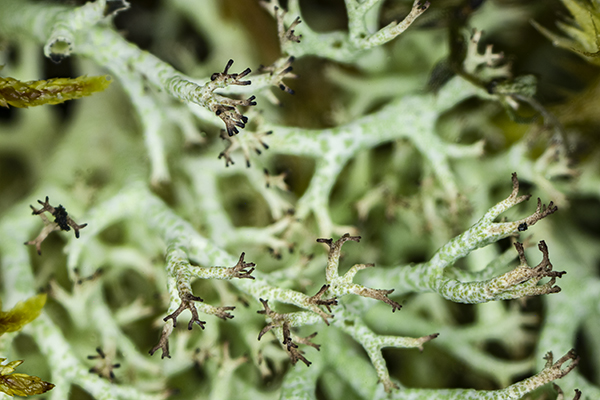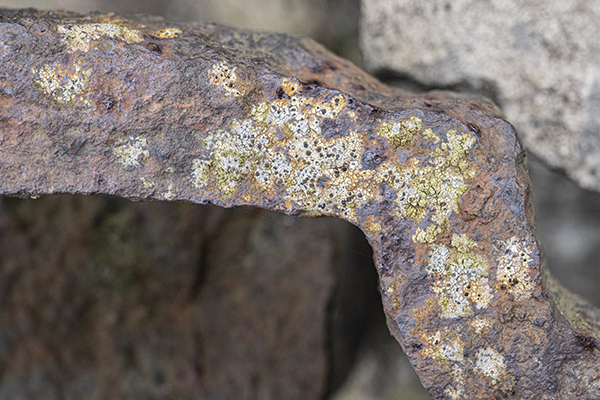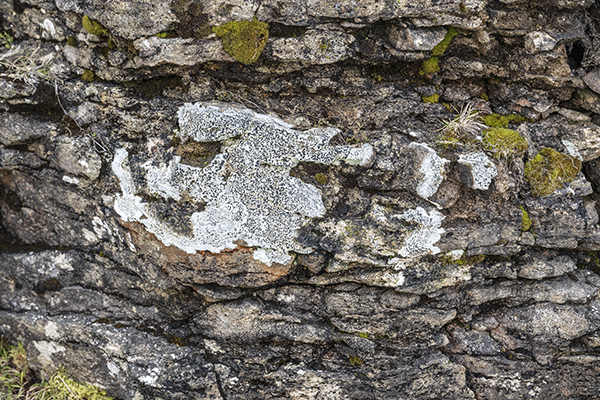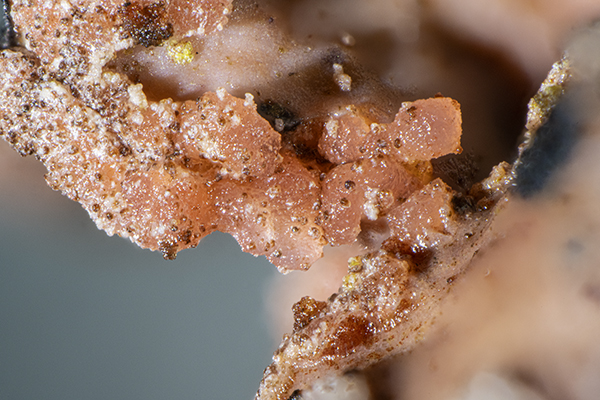Lichens
Symbiotic associations
Click each image for further information
Lichens are a complex of a fungal body with photosynthetic organisms, usually green algae and/or cyanobacteria. The fungus part provides attachment to the substrate and an ability to extract nutients, typically from either wood or rock. The photosynthetic part provide sugars, made by photosynthesis. Lichens are extremely tough and able to withstand prolonged freezing and drought. They are often the first living things to colonise bare substrates and do not require soil.
Lichens are good indicators of air pollution. Some are more tolerant than others. It is possibly the case that the lichen population was reduced during the lead smelting era of the 19th century and may be showing signs of recovery. The lichen Ramalina fraxinea is particularly sensitive to sulphur dioxide pollution and is now present in Redmire.







































